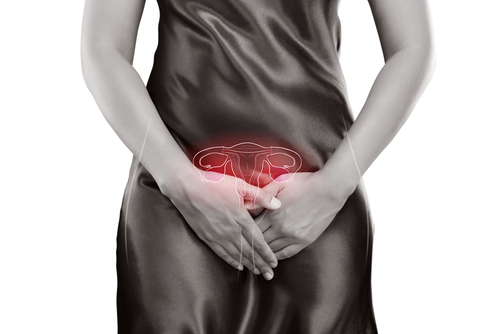Abnormally high expression of CACNA2D3, a gene involved in the process and transmission of pain, is associated with endometriosis, according to a recent study.
This finding supports the use of Neurontin (gabapentin) — an effective treatment for chronic pain conditions — to treat endometriosis-associated chronic pelvic pain.
The study, “Comparative analysis of molecular signatures suggests the use of gabapentin for the management of endometriosis-associated pain,” was published in the Journal of Pain Research.
Chronic pelvic pain (CPP) — pain felt below the belly button and between the hips for at least six months — is a common symptom in women with endometriosis, which significantly affects the quality of life and work efficiency of these women.
Treatment of endometriosis-associated pain often is a challenge due to its unclear cause, complex clinical presentation, and poor response to current therapies.
In recent years, Neurontin (gabapentin) — a medicine that mimics the neurotransmitter GABA (gamma-aminobutyric acid) — is increasingly being prescribed to treat chronic pelvic pain, due to its effectiveness as a painkiller for neuropathic pain (pain that affects the nerves), and chronic pain conditions.
However, only two small studies have shown clinical benefits of Neurontin in chronic pelvic pain: one that included 56 patients with endometriosis and vulval conditions, and a pilot study (GaPP1) in 47 women with pelvic pain.
Currently, Neurontin effects in chronic pelvic pain are being evaluated in a larger clinical trial (GaPP2) involving 300 women, which is expected to end in August 2018.
The levels of Dlx5 and Dlx6 proteins — present in the nerve cells that produce the neurotransmitter GABA, known to be involved in the regulation of chronic pain – are strongly reduced in endometriotic lesions.
The genetic deletion of Dlx5 and Dlx6 genes in the endometrium of mice shows strong similarities with human endometriosis, suggesting that these mice could be used as an endometriosis mouse model.
Now, in the study recently published in the Journal of Pain Research, a team of researchers looked for new endometriosis targets, by analyzing deregulated gene expression in both human endometriosis and in this potential endometriosis mouse model. Among human samples, 37 ovarian endometriosis samples, and 12 healthy endometrium samples, from the tissue collection at the University of Genoa, Italy, were analyzed.
Thirty genes were found to be commonly deregulated in endometriosis samples and in the potential mouse model, supporting Dlx5/Dlx6 reduction as an early event in endometriosis progression, and the use of these mice as an endometriosis mouse model.
Among the 17 genes found to be highly expressed in endometriosis, the researchers focused on CACNA2D3, a gene involved in the process and transmission of pain.
The levels of CACNA2D3 were highly increased in endometriosis, compared with healthy endometrium, validating CACNA2D3 as a therapeutic target.
These findings, along with evidences suggesting that Neurontin targets proteins of the family of CACNA2D3, support the idea that Neurontin may be an effective therapy for endometriosis-associated pain.
Researchers noted that a large definitive trial evaluating the effectiveness of Neurontin in endometriosis-associated pain is strongly recommended.

